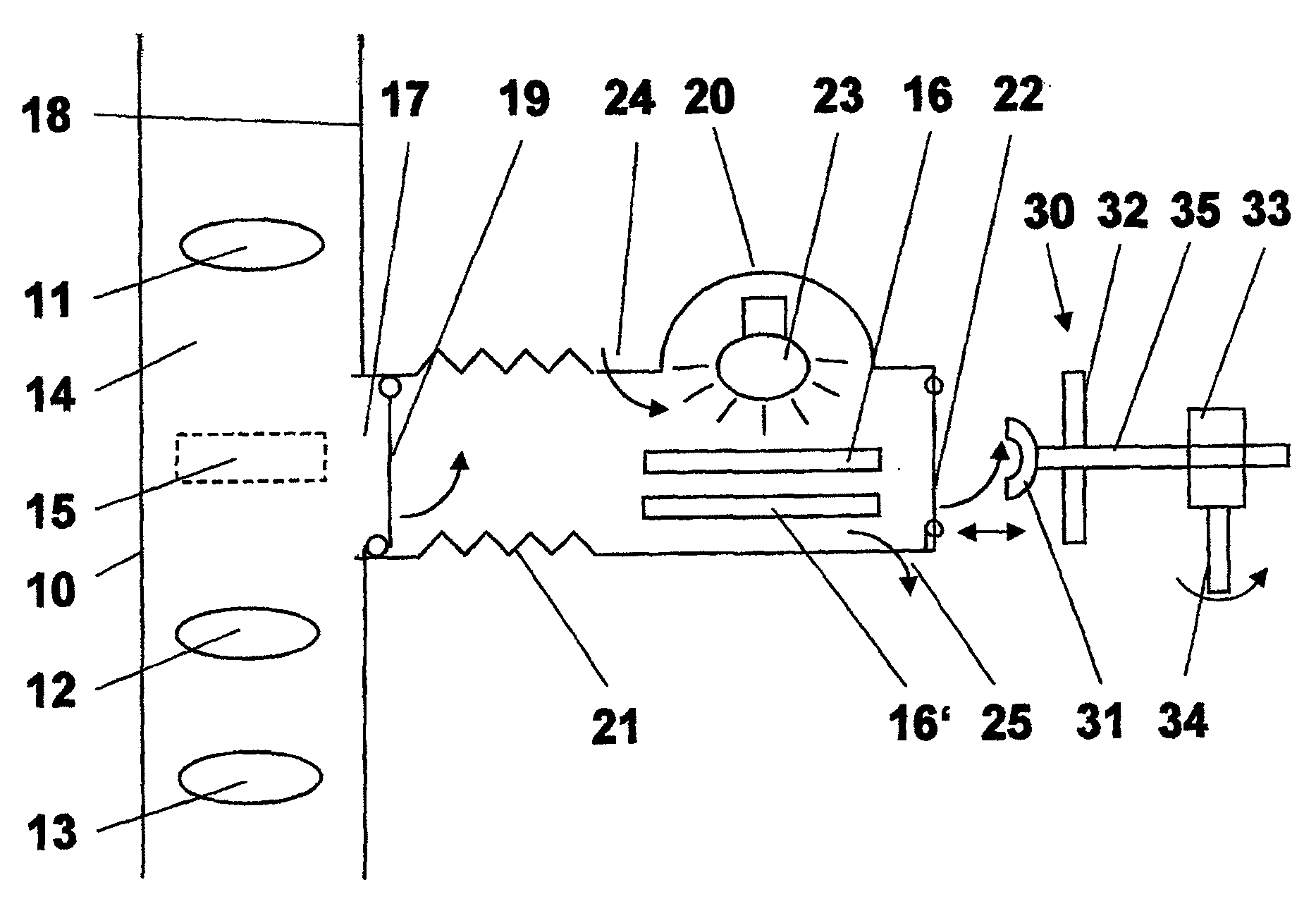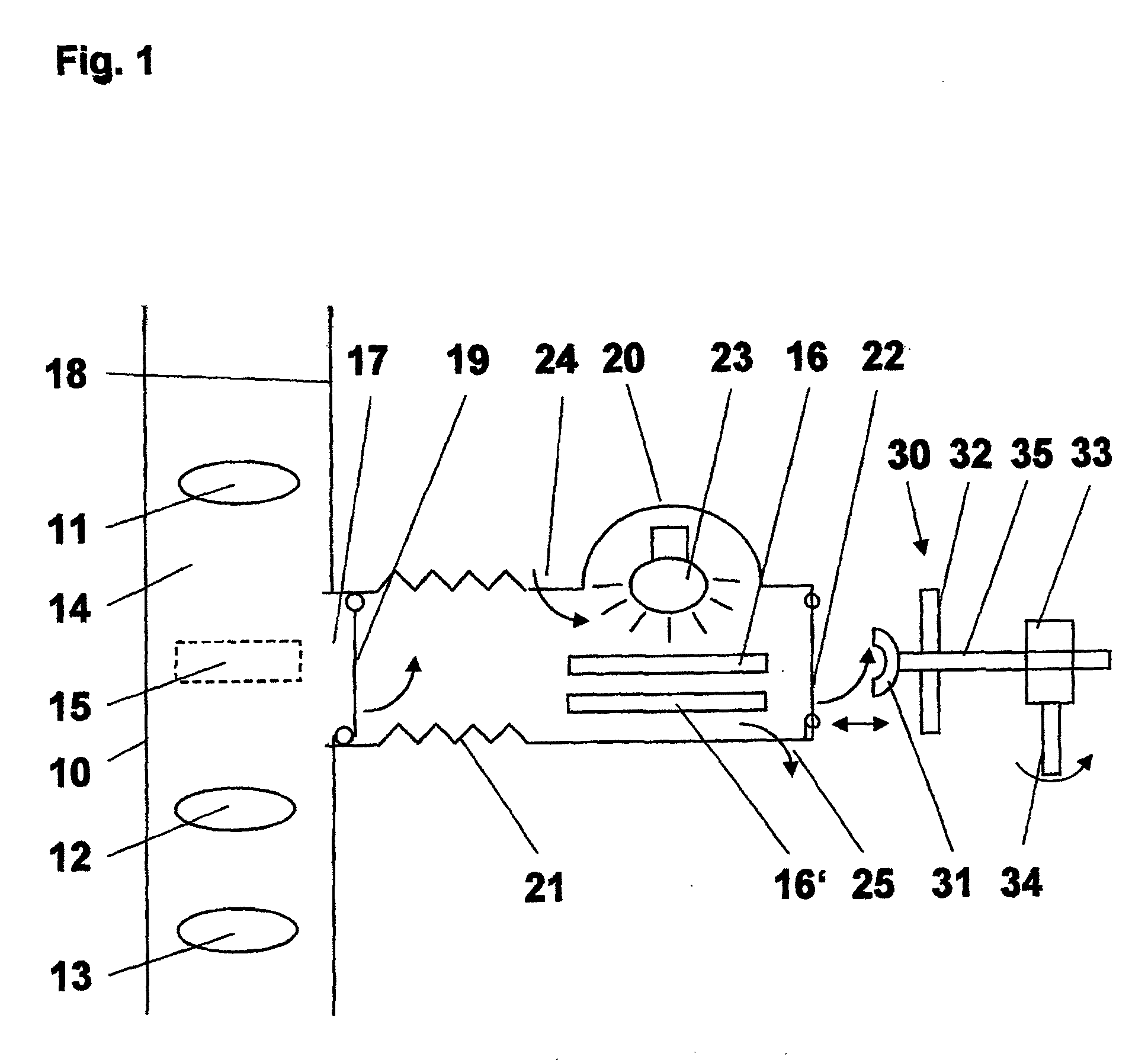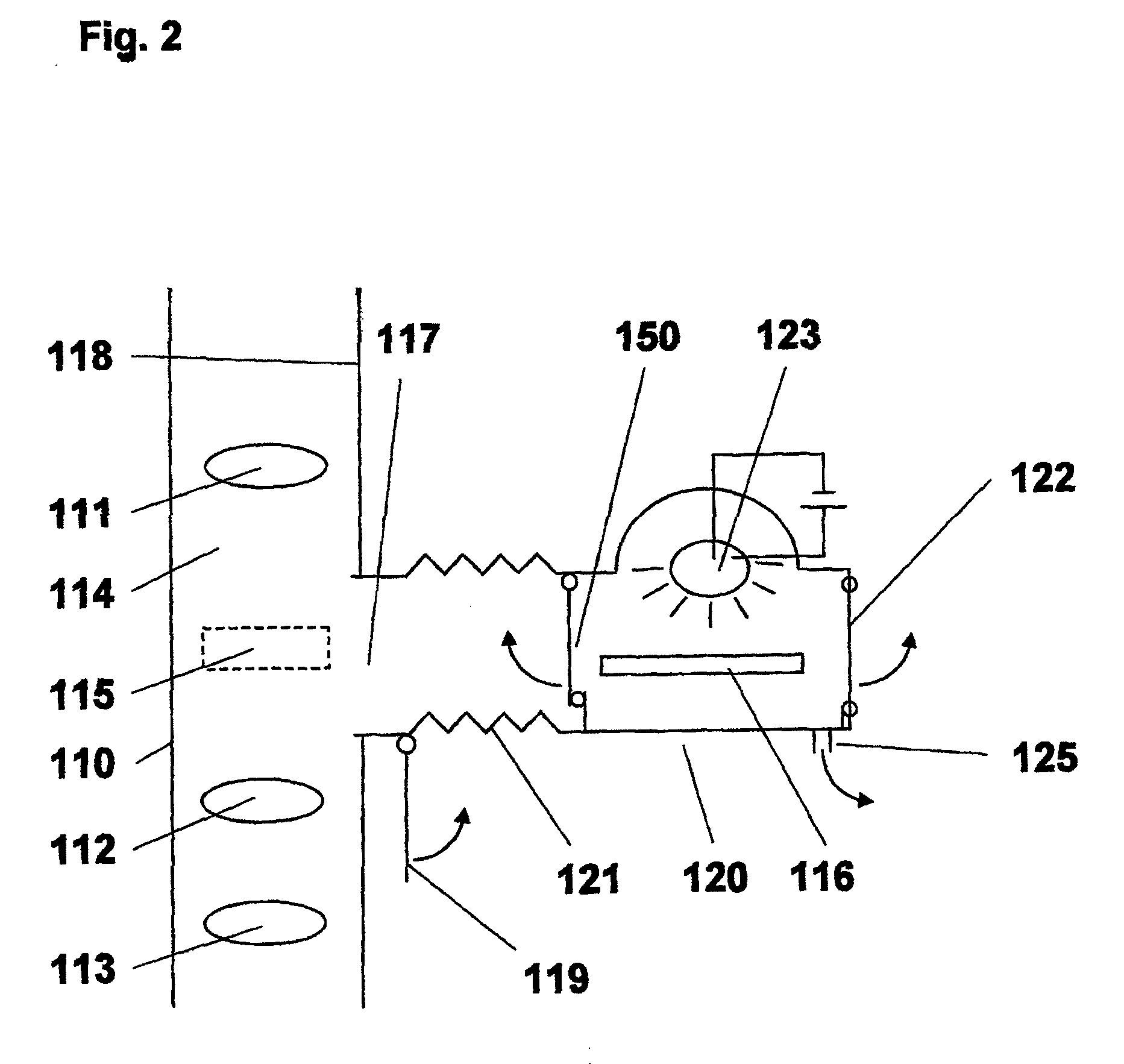Method and device for replacing objective parts
a technology of objective parts and replacement methods, applied in the direction of photomechanical equipment, instruments, cleaning using liquids, etc., can solve the problems of imposing a very high space requirement, affecting the effect of optical elements, so as to avoid the introduction of contaminants, short downtime, and effective and easy replacement methods
- Summary
- Abstract
- Description
- Claims
- Application Information
AI Technical Summary
Benefits of technology
Problems solved by technology
Method used
Image
Examples
embodiment 2
[0084]FIG. 3 shows a further embodiment of an inventive objective and a cleaning device 220 interacting with it. Again, , similar or identical components are provided with identical reference symbols, with, in turn, the reference numbers being 200 higher than in FIGS. 1 and 100 higher than the reference numbers of FIG. 2. Here, too, an additional description of components already discussed is eschewed.
[0085]FIG. 3 shows in addition to FIGS. 1 and 2 sealing elements 227 in the region where the cleaning device 220 is connected to the objective housing 218. In the simplest case, these may be O-rings or other tensioned elastic elements, such as metal seals, that guarantee a gastight seal. Alternatively, a leaky seal may be chosen if, by means of corresponding excess pressure in the objective 210 or the cleaning device 220, it is ensured that no foreign substances can gain entry into the objective 210 or the cleaning device 220.
[0086]Further, FIG. 3 shows that the handling device 230 can...
fourth embodiment
[0089]FIG. 4 shows a cleaning device 320 in cooperation with an objective 310, also in a schematic cross-section like the previous depictions of FIGS. 1 to 3.
[0090]Here, again, identical or similar components have identical reference numbers, but have been increased by 300 relative to FIG. 1, by 200 relative to FIG. 2 and by 100 relative to FIG. 3. Accordingly, here, too, an additional description of components already described is eschewed, and only additional components and parts are described in detail.
[0091]FIG. 4 shows a transport channel 340 as a component of the cleaning device 320, which channel, however, can be separated from the actual cleaning room 328, in which cleaning room the dashed lines represent the position of the replaceable objective part 316 during cleaning.
[0092]In the embodiment shown in FIG. 4, the transport channel 340 accommodates the handling device 330. However, the transport channel 340 can also be designed so as not to have a handling device.
[0093]The ...
PUM
| Property | Measurement | Unit |
|---|---|---|
| wavelengths | aaaaa | aaaaa |
| wavelengths | aaaaa | aaaaa |
| wavelengths | aaaaa | aaaaa |
Abstract
Description
Claims
Application Information
 Login to View More
Login to View More - R&D
- Intellectual Property
- Life Sciences
- Materials
- Tech Scout
- Unparalleled Data Quality
- Higher Quality Content
- 60% Fewer Hallucinations
Browse by: Latest US Patents, China's latest patents, Technical Efficacy Thesaurus, Application Domain, Technology Topic, Popular Technical Reports.
© 2025 PatSnap. All rights reserved.Legal|Privacy policy|Modern Slavery Act Transparency Statement|Sitemap|About US| Contact US: help@patsnap.com



